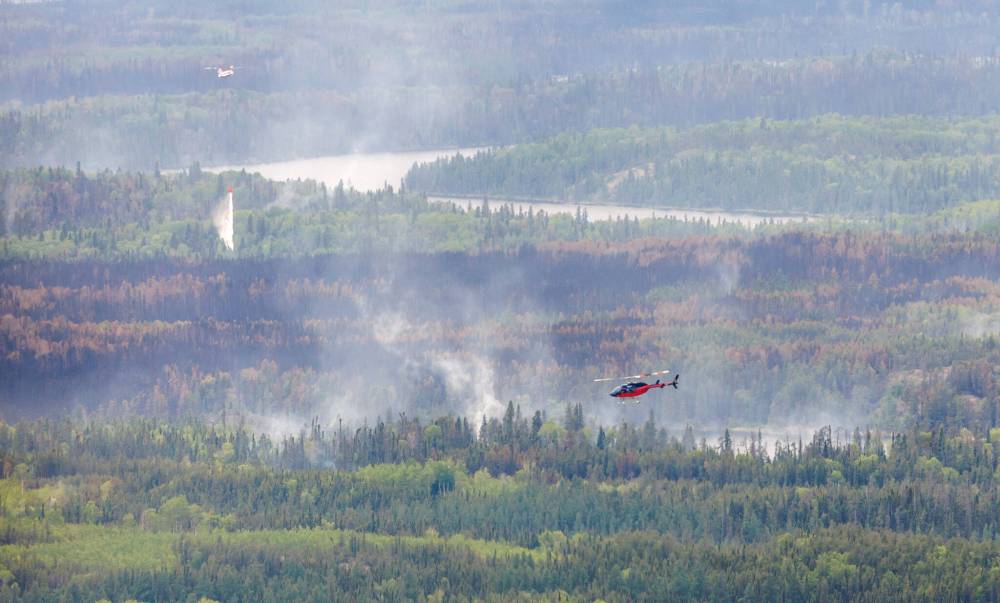The role drones can play in wildfire detection
Advertisement
Read this article for free:
or
Already have an account? Log in here »
To continue reading, please subscribe:
Monthly Digital Subscription
$0 for the first 4 weeks*
- Enjoy unlimited reading on winnipegfreepress.com
- Read the E-Edition, our digital replica newspaper
- Access News Break, our award-winning app
- Play interactive puzzles
*No charge for 4 weeks then price increases to the regular rate of $19.00 plus GST every four weeks. Offer available to new and qualified returning subscribers only. Cancel any time.
Monthly Digital Subscription
$4.75/week*
- Enjoy unlimited reading on winnipegfreepress.com
- Read the E-Edition, our digital replica newspaper
- Access News Break, our award-winning app
- Play interactive puzzles
*Billed as $19 plus GST every four weeks. Cancel any time.
To continue reading, please subscribe:
Add Free Press access to your Brandon Sun subscription for only an additional
$1 for the first 4 weeks*
*Your next subscription payment will increase by $1.00 and you will be charged $16.99 plus GST for four weeks. After four weeks, your payment will increase to $23.99 plus GST every four weeks.
Read unlimited articles for free today:
or
Already have an account? Log in here »
The people most directly affected by wildfires are upset by the inability to prevent them. The best way to combat forest fires is to detect them early and extinguish them when they are small.
Investing in wildfire prevention has obvious benefits. Considering the millions of dollars spent on mass evacuations and disruption of people’s lives, more should be spent on prevention. A research project at the University of Manitoba to develop a spherical drone airship communication platform offers a low-cost and effective approach.
Sensor technology is available to spot heat signatures of potential forest fires, even at great distances. With AI technology these data can be scanned for anomalies that are beyond human ability to detect.

The missing piece is the lookout tower. Without higher elevation, sensors have a limited range of vision. Helicopters and airplanes could provide altitude, but have limited endurance. Moreover, the cost to provide 24-7 observation with these aircraft would be exorbitant. In contrast, buoyant aircraft like drone airships can easily stay aloft for days at a time before needing to land for refuelling.
The University of Manitoba has a multidisciplinary project designed to test an autonomous airship as a communications platform for the North. Chesterfield Inlet, Nunavut, is the co-operating community and the project leader is Dr. Philip Ferguson. The objective is to use a drone airship to provide constant and dedicated high-speed data connectivity in support of community safety and environmental situational awareness. This same technology could operate in the boreal forest to spot wildfires.
A single airship drone at 1,000 metres altitude could scan 100 kilometres in every direction and protect over three million hectares of boreal forest. With the use of AI, forest rangers would be able to differentiate mist from smoke and the heat signature of a bear from a lightning strike.
Spotting fires is the first step. Putting fires out before they spread is the objective. The drone airship is envisioned to operate as a fire-ranger “mothership,” called Orbo. An Orbo can carry quadcopter drones equipped with fire extinguishers. Quadcopters are already in use to put out fires in high-rise buildings that are too high to reach with ladders. If spotted in time, such quadcopters, carrying 25 kilograms of extinguisher each could halt small fires before they grow.
The limitation of all quadcopters is flight time. Most batteries only provide about 30 minutes of flying time, although if launched from a higher altitude they might have more endurance. Regardless, the quadcopters need to return to Orbo. BASI, which is partnering in this study, has developed technology to catch, charge and dispatch drones from an electrically powered, spherical airship.
Operationally, fire extinguisher quadcopters would be dispatched by a remote operator when the system identifies the location of the fire. Subsequently these first responder drones would return to the fire-ranger Orbo for charging. If the fire is already too big, helicopters or water bombers could be called on to respond. The quadcopters could provide camera feed or laser guidance to direct the larger aircraft to put out the fire.
As climate change progresses, the risks of wildfires are increasing, too. The challenge is enormous because the vast boreal forest covers 60 per cent of Canada’s land mass, or 552 million hectares. With new technology the barriers of geography are surmountable. The entire boreal forest could be monitored with only 160 fire-ranger Orbos. This would cost less than half the $1.2 billion insured losses of the Jasper wildfire.
Complaining about a ‘cycle of failure’ to control wildfires is unfair. Climate change is creating conditions beyond the capacity of current water bomber fleets. As argued in the Free Press editorial (Canada faces great need for water bombers, Aug. 16), but with no hope of additions until 2031.
Water bombers could be used more effectively in conjunction with Orbos and would need to address far fewer fires, if they could be put out quickly. Also, Orbos are about one-fifth the cost to build than a $25-million water bomber.
Orbos could be flying by 2027, if investment in this development was expanded. It is worth noting, however, that the initial reason for this research was to provide better communications in remote areas. A network of fire-ranger Orbos could provide high-speed internet across the boreal forest and meteorological data, as well as defending against wildfires.
Universities are funded publicly to develop ideas and technology for the betterment of society. The fire-ranger drone innovation at the University of Manitoba provides a solution to a critical problem. Its commercialization holds promise to pay a high return to further public and private investment.
Dr. Barry E. Prentice is the director of the Transport Institute at the University of Manitoba’s Asper School of Business.


